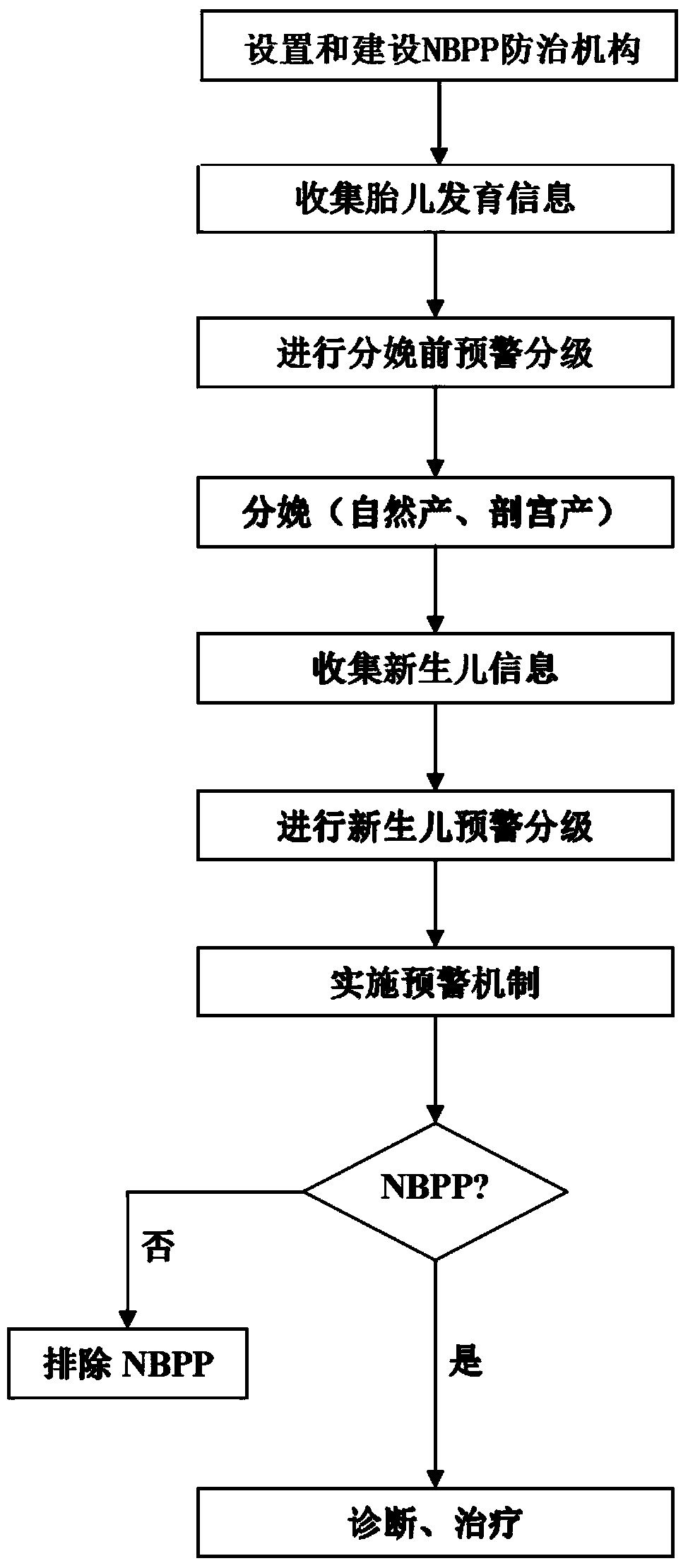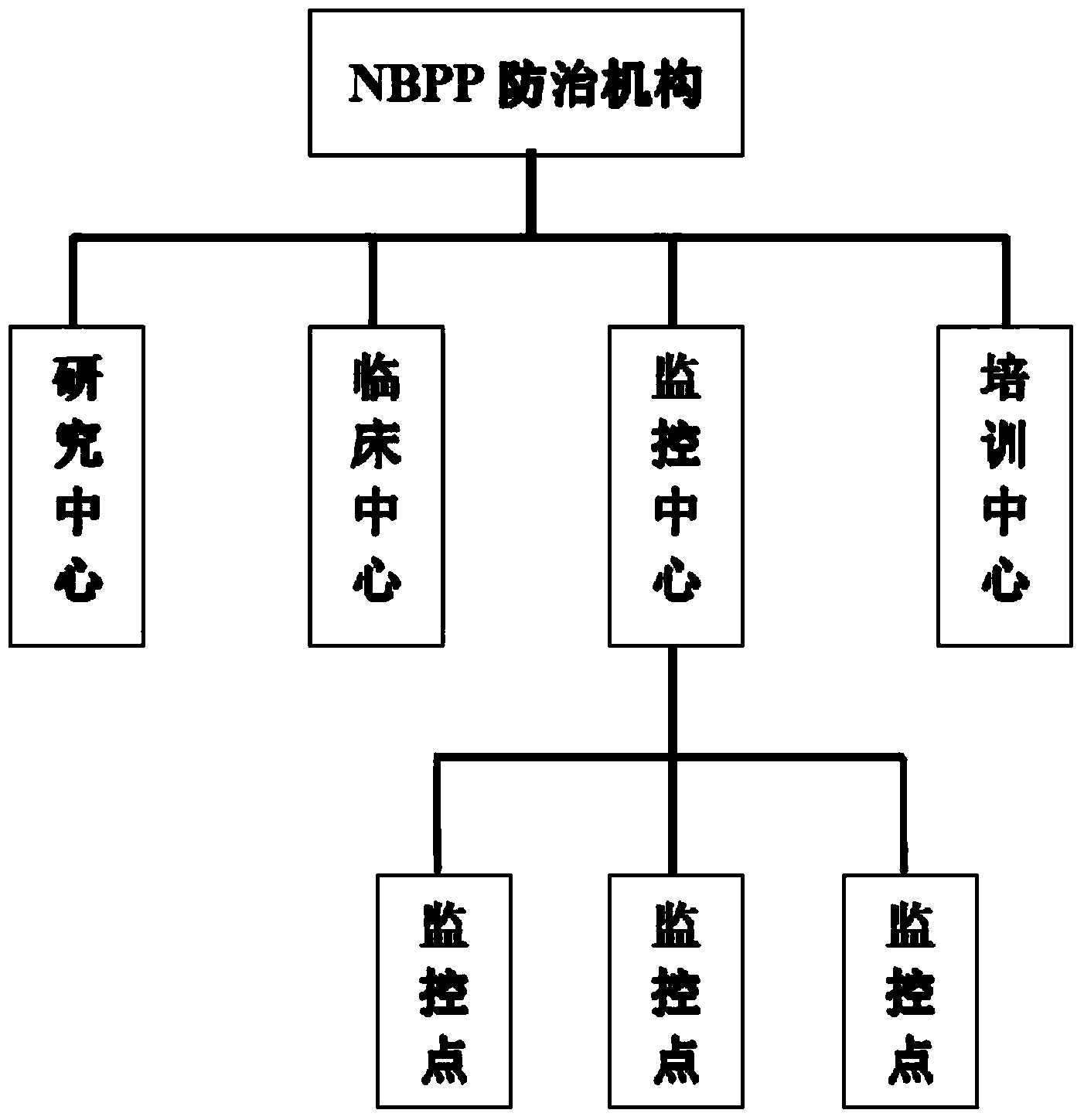NBPP prevention and treatment method based on disease control theory
A technology for brachial plexus injury and newborns, applied in special data processing applications, instruments, electrical digital data processing, etc., can solve the problems that the mechanism of NBPP cannot be clarified and cannot be repeated, and achieve the effect of reducing the degree of disability and reducing disability
- Summary
- Abstract
- Description
- Claims
- Application Information
AI Technical Summary
Problems solved by technology
Method used
Image
Examples
Embodiment Construction
[0036] At 12 weeks of fetal development, the fetal upper limbs (including bones, muscles, brachial plexus, etc.) have developed completely, because the limbs are pasted on the uterine wall, uterine wall deformity, uterine fibroids, exostoses of the first rib of the fetus, amniotic membrane winding or Umbilical cord restraint can affect the occurrence of NBPP. So starting from this period, it is meaningful to observe the existence state of the fetus.
[0037] The delivery process is an important process for the occurrence of NBPP. According to our hypothesis on the mechanism of NBPP, it can be understood that the delivery process is almost the only process in which NBPP occurs; The effect that occurs. From this point of view, the childbirth process is an important link in the prevention of NBPP, and fetal development information, maternal management, delivery technology level, etc., are important basis and means to prevent NBPP in the childbirth process.
[0038] Although it ...
PUM
 Login to View More
Login to View More Abstract
Description
Claims
Application Information
 Login to View More
Login to View More - R&D
- Intellectual Property
- Life Sciences
- Materials
- Tech Scout
- Unparalleled Data Quality
- Higher Quality Content
- 60% Fewer Hallucinations
Browse by: Latest US Patents, China's latest patents, Technical Efficacy Thesaurus, Application Domain, Technology Topic, Popular Technical Reports.
© 2025 PatSnap. All rights reserved.Legal|Privacy policy|Modern Slavery Act Transparency Statement|Sitemap|About US| Contact US: help@patsnap.com


